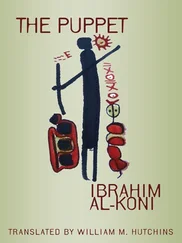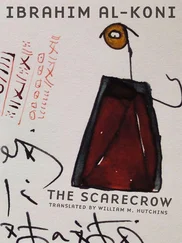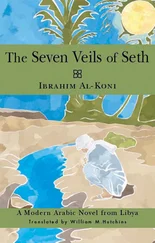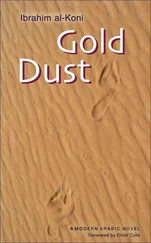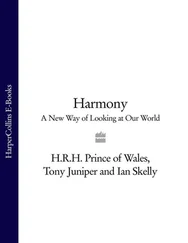Tensions between nomadism and settled life in al-Koni’s novels have implications beyond Tuareg (or Mongolian) nomadism; they affect all of us when we face choices like relocation for career advancement. If scientists model human medical conditions on laboratory animals and breed special families of creatures for their research, and if other researchers use one phenomenon as a model for another, al-Koni may be said to create models derived from Saharan life for the study of assorted global issues. If al-Koni has frequently used similar Saharan models, he has deployed them at least in part as metaphors for a wide spectrum of human concerns. All the same, his models are lovingly based on Tuareg folklore, about which he is a leading expert. Although many of his novels seem allegorical, they are better described as reverse allegories: excellent examples of many different things offered for the reader’s creative use. One reader may, for example, choose to consider the almost Satanic leader in The Tumor and The Scarecrow as an allusion to Colonel Qaddafi, and the brave new community of New Waw may stand for Libya. Another equally perceptive reader may be brooding about some other time or place.
If the message of New Waw were distilled into one phrase it might be that enhanced insight into the human condition is not neatly correlated with technological progress. Fortunately New Waw is a novel and not a distilled message.
William M. Hutchins
______________
1. Ron Rash, “‘Nothing Gold’ Stays Long In Appalachia,” Weekend Edition , National Public Radio, February 16, 2013.
2. Ibrahim al-Koni, “Le ‘discours’ du desert: Témoinage,” in La poétique de l’espace dans la littérature arabe moderne , ed. Boutros Hallaq, Robin Ostle, and Stefan Wild (Paris: Presses Sorbonne Nouvelle, 2002), 96–101.
3. Ziad Elmarsafy, Sufism in the Contemporary Arabic Novel (Edinburgh: Edinburgh University Press, 2012), 107.
4. P. F. de Moraes Farias, Arabic Medieval Inscriptions from the Republic of Mali (Oxford & New York: Oxford University Press for the British Academy, 2003), cxxvii ff .
5. Umar al-Ansari, Tabib Tinbuktu [ The Physician of Timbuktu ] (Beirut: al-Mu’assasa al-‘Arabiya li-l-Dirasat wa-l-Nashr, 2012).
6. Al-Koni, “Témoinage,” 98.
7. See Michael Parker, The Geographical Cure (New York: Penguin Books, 1994) for an American exploration of the curative virtues of travel or migration.
8. See Benjamin C. Ray, African Religions: Symbol, Ritual, and Community , 2nd ed. (Upper Saddle River, New Jersey: Prentice Hall, 2000) for information about these.
What? Didn’t you say the sky and birds prove God’s existence?
Blaise Pascal, Pensées, Article IV, Section 244
1
For as long as he could remember he had listened for counterpoint in the bird’s song.
In fact, after many seasons had elapsed and the gullies had experienced numerous floods, he felt certain now that this hidden bird’s polyphonic skill was the secret reason he had been fascinated with it over the years. The bird’s soft, gentle call, which reminded him of wind whistling through reeds, could not be transcribed in any script nor could the tongue mimic it. It began as a faint murmur, and then a mournful cooing immediately came in and rose to a robust melody that sounded like the vibrations of the imzad ’s lone, 1mournful string harmonizing with a second, lower string. These two then blended together to create — sadly, mournfully, and lyrically — an epic that told the entire desert’s story. The secretive call created an equally secret message. The song, which could not be recorded by an alphabet or even pictographs and which thwarted any attempt by a tongue to imitate it, began with a soft, mild, mysterious, nebulous murmur that stirred longing and that — as it grew ever louder — breathed life into concealed embers, into sparks that have always been the wayfarer’s law and that have always served as the religion of the wasteland’s inhabitants, who, since their birth, have never stopped searching for what the wasteland has hidden. The bird’s call suddenly became polyphonic as another concealed bird joined in, and then this new voice keened a different ballad. The two melodies created a counterpoint and harmonized to become a single tune, a new carol. Then the song changed course and soared into another realm, transforming the bare land and extending its expanse. The wasteland’s temptation grew ever more intense, and the desert promised a new reunion, an everlasting one that was born the same day the wayfarer was and that burst into existence the same day he did, even though the wayfarer would depart and wander off while the promise remained. The eternal temptation endured as a hint of an impossible reunion and functioned as a huge snare to lure wayfarers to the desert and to life by flaunting a promise — of an oasis and a reunion — that would never be fulfilled. In the newly expanded distance, delight triumphed and the heart overflowed with ecstasy. The body quivered with a dancelike tremor, because a glow had appeared on the horizon, because a torch had cleft the dark recesses of the pale, eternal horizon, appearing for a brief glimpse as a flash of lightning, and this was a sign the wayfarer had craved for a long time and had struggled endlessly to observe. Then the stern, hostile, eternal emptiness supplied a signal like sparks of revelation, and he saw what he had never seen in that expanse and discovered what he had never been able to find; in fact, he discovered what he had not wanted to find.
So how could his frail body keep from trembling ecstatically? How could a tear of longing not spill from his eye?
2
The desert welcomes birds twice a year. In the spring, flocks arrive from the South, spend a few days in the nomadic encampments, and then call to each other to resume their voyage to the countries of the North. In fall, they come from the North, spend some days in the camps again, and then call to each other to travel to the lands of the South. People say that in the past the flocks preferred oases as migratory way stations but that these dense throngs of birds alarmed the oasis dwellers, who thought the onslaught threatened their crops. So they fought off the birds, set traps for them, shot arrows at them, and beat drums to frighten them away. Then the birds abandoned the oases, and migrating flocks avoided cultivated fields, eventually choosing the desert’s nomadic camps for their stopovers. The desert people consider their arrival a very good omen, and their sages reckon the birds’ landing a heavenly sign. So diviners travel for quite long distances to meet the birds when the flocks arrive and follow them for even greater distances when they depart. It is said that the diviners pursue the flocks of birds to discover the enigmatic insights the Spirit World has encoded in their behavior, songs, and flight.
The diviners are not the only ones delighted by the birds’ arrival. All the desert people go out to the open country when the first flock appears on the horizon. The sages hurry out before anyone else to greet the migrating community. They head to the wasteland in scattered groups, striding with noble arrogance and preceded by the leader, who walks alone, decked out in his ceremonial regalia. Trailing the nobles are the warriors, also grouped in units. Behind the men come clusters of women, who drag their children after them, wave their babes in the air, and chant cheerful ballads, trilling an epic into their children’s ears: “Here are the birds that gave you to me last year; they’ve come again. Here’s the abil-bil , the egret, which brought you to me, returning to see you. The birds are your mother. The birds are your father. The birds are your brothers. The birds are your family. The birds have come to visit their child whom they entrusted to me. The birds have come to reclaim their trust. When will you be old enough to accompany the birds? When will you sprout wings so the flock will accept you into the tribe and you can migrate with the birds to the Land of the Birds?”
Читать дальше

